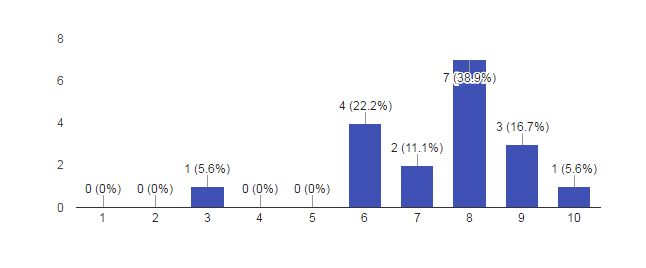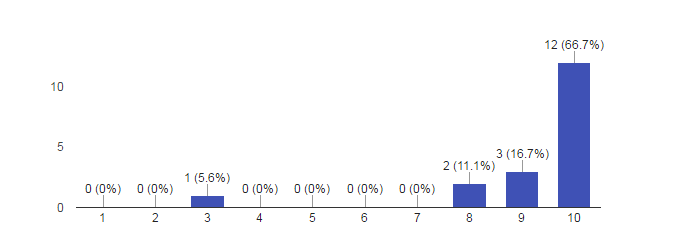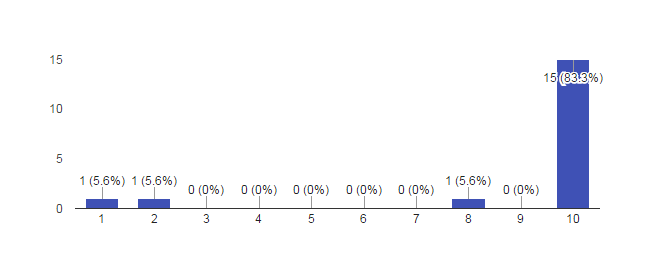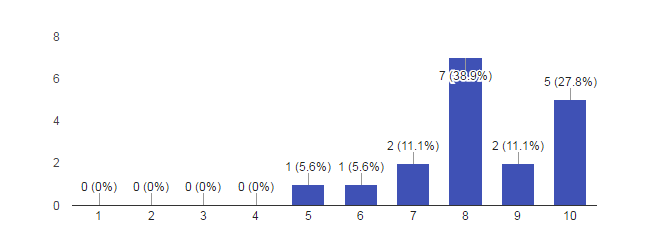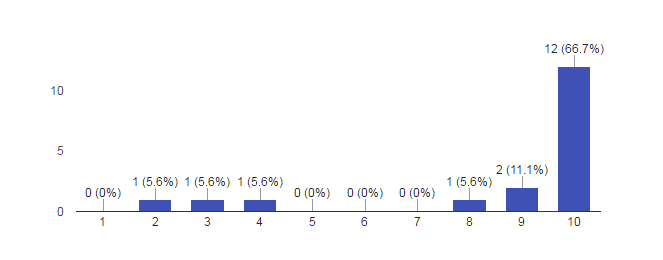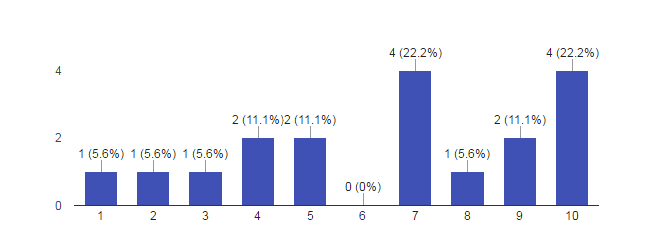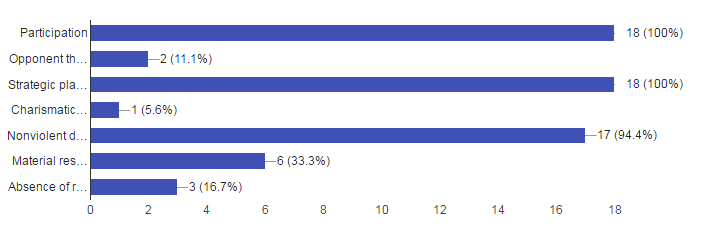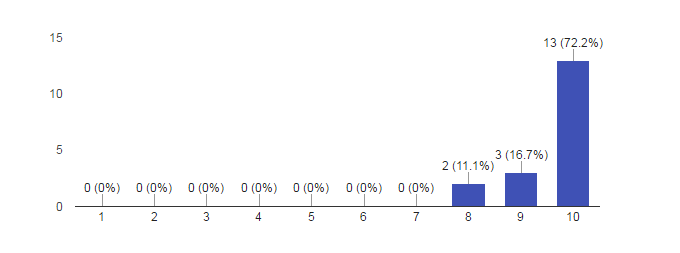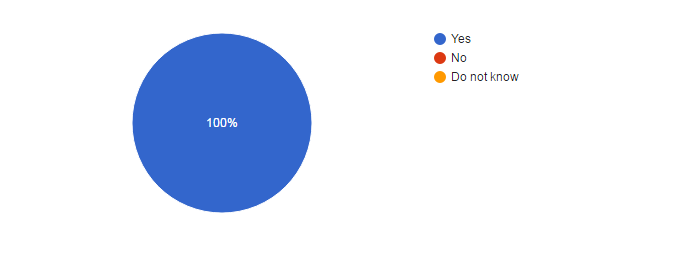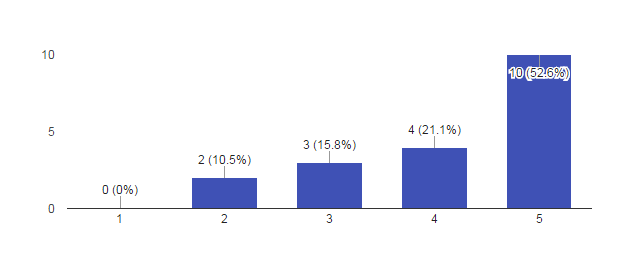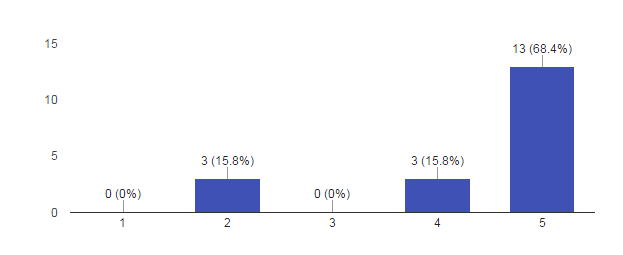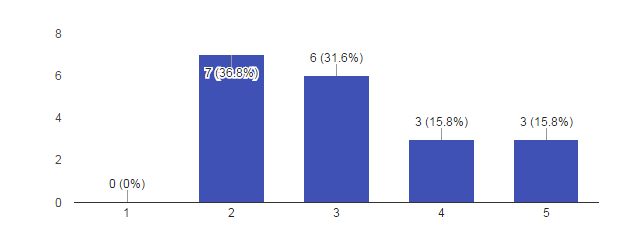Sri Lanka: Protests break out over death of fisherman
New Zealand: Health workers, patients protest chronic health underfunding
Argentina: Thousands of teachers strike for wage increases amid inflation
Zimbabwe: Evan Mawarire, pastor behind #ThisFlag movement, denied bail
Sri Lanka: Families stand up to the soldiers who took their homes
Populists and autocrats: the dual threat to global democracy
South Korea: Seoul streets jam-packed with protesters for and against Park
Why did Occupy Stumble: Key Lessons for Activists Today
This Academic Webinar took place on Thursday, April 6 at 12 p.m. EST.
This webinar was presented by Matthew Johnson
Watch the webinar below:
Webinar content:
1. Introduction of the Speaker: 00:00 – 01:03
2. Presentation: 01:03 – 32:05
3. Questions and Answers: 32:05 – 53:18
Webinar Summary:
This webinar will discuss the Occupy Movement of 2011 from a firsthand perspective. It will look at its failure to achieve major goals: to abolish corporate-elite governance and restore democracy for the so-called “99 percent.” At least five factors will be identified as contributing to the movement’s decline: 1) Rugged Individualism, 2) Lack of Respect for/Faith in Leadership, 3) Sectarianism, 4) Internal Oppression, and 5) Lack of Training and Nonviolent Discipline. The concluding part of the webinar will consider the key lessons of Occupy for later movements, such as the Standing Rock campaign, and the Women’s March, as well as offer recommendations for the future large-scale progressive civil resistance in the United States.
CHECK OTHER UPCOMING WEBINARS
Presenter:
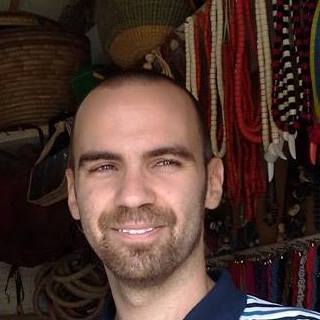 Born in Baltimore, Maryland, Matthew Johnson holds an MA in Peace and Conflict Studies from Hacettepe University (Turkey) and a BA in Journalism from the University of Maryland. Although a product of the public school system, he is passionate about nontraditional educational environments. He previously worked at a youth detention center, where he introduced a popular peace studies class along with teaching English, social studies, and GED prep. Most recently he taught at a progressive private school in NJ. Aside from teaching, conflict resolution and restorative justice are his main interests. He has researched and practiced alternatives to punishment or legal action in the context of schools, the justice system, and social movements for five years, serving thousands of students, prisoners, organizations, and community members. He is trained in numerous practices including mediation, nonviolent third-party intervention, transformative justice, community conferencing, dialogue circles, Restorative Circles, and crisis counseling for trauma victims.
Born in Baltimore, Maryland, Matthew Johnson holds an MA in Peace and Conflict Studies from Hacettepe University (Turkey) and a BA in Journalism from the University of Maryland. Although a product of the public school system, he is passionate about nontraditional educational environments. He previously worked at a youth detention center, where he introduced a popular peace studies class along with teaching English, social studies, and GED prep. Most recently he taught at a progressive private school in NJ. Aside from teaching, conflict resolution and restorative justice are his main interests. He has researched and practiced alternatives to punishment or legal action in the context of schools, the justice system, and social movements for five years, serving thousands of students, prisoners, organizations, and community members. He is trained in numerous practices including mediation, nonviolent third-party intervention, transformative justice, community conferencing, dialogue circles, Restorative Circles, and crisis counseling for trauma victims.
Relevant Readings:
- ‘Occupy Justice’ http://wagingnonviolence.org/feature/occupy-justice/
- ‘Internal Failures of Occupy’ http://www.everythingology.com/wp-content/uploads/2013/03/The-Anti-movement-Occupy.pdf
- ‘Outcomes of OWS’ https://mobilizingideas.wordpress.com/category/essay-dialogues/outcomes-of-ows/
Organizing Civil Resistance in Divided Societies: Key Lessons from Nepal, South Africa, and East Timor
This Academic Webinar took place on Wednesday, March 22, 2017 at 12 p.m. EST.
This webinar was presented by Dr. Ches Thurber
Watch the webinar below:
Webinar content:
1. Introduction of the Speaker: 00:00 – 01:01
2. Presentation: 01:01 – 36:48
3. Questions and Answers: 36:48 – 56:12
Webinar Summary:
Social divisions, such as ethnicity, race, religion, and class, create unique challenges for those engaging in civil resistance. Researchers point out that civil resistance campaigns in non-democracies are significantly less likely to achieve their goals when ethnic divisions are at stake. In fact, in such polarized environments, civil resistance campaigns are not only less likely to succeed, but they rarely even get off the ground.
Constraints on activists’ ability to activate key mechanisms of nonviolent success deter groups form launching a civil resistance campaign and may even encourage them to opt for a violent strategy instead. Examining cases such as the Nepali Maoists’ transition to nonviolent resistance, the anti-Apartheid movement in South Africa and the movement for East Timorese independence, this webinar will highlight tactics such as alliance-building and internationalization of the conflict that have helped movements overcome challenges of organizing in divided society. Key lessons for civic mobilization and civil resistance in polarized societies will be offered and discussed.
CHECK OTHER UPCOMING WEBINARS
Presenter:
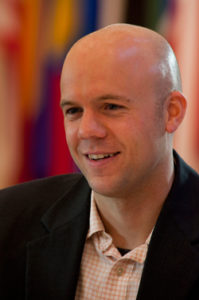 Dr. Ches Thurber is an Assistant Professor in the Department of Political Science at Northern Illinois University. His research examines the range of contentious global politics from nonviolent resistance movements to interstate war. His book manuscript, Between Mao and Gandhi: Strategies of Violence and Nonviolence in Revolutionary Movements, investigates variation in the strategic behavior of groups seeking to capture state power. Findings from his research were featured on the Australian Broadcasting Corporation’s “Big Ideas” radio program. Previous work has been published in Small Wars and Insurgencies, the Journal of Public and International Affairs, and al-Naklah. Previously, Dr. Thurber was a research fellow at the Chicago Project on Security and Terrorism at the University of Chicago and at the Harvard Kennedy School’s Belfer Center for Science and International Affairs. He received his Ph.D. from The Fletcher School of Law and Diplomacy at Tufts University and his B.A. from Middlebury College.
Dr. Ches Thurber is an Assistant Professor in the Department of Political Science at Northern Illinois University. His research examines the range of contentious global politics from nonviolent resistance movements to interstate war. His book manuscript, Between Mao and Gandhi: Strategies of Violence and Nonviolence in Revolutionary Movements, investigates variation in the strategic behavior of groups seeking to capture state power. Findings from his research were featured on the Australian Broadcasting Corporation’s “Big Ideas” radio program. Previous work has been published in Small Wars and Insurgencies, the Journal of Public and International Affairs, and al-Naklah. Previously, Dr. Thurber was a research fellow at the Chicago Project on Security and Terrorism at the University of Chicago and at the Harvard Kennedy School’s Belfer Center for Science and International Affairs. He received his Ph.D. from The Fletcher School of Law and Diplomacy at Tufts University and his B.A. from Middlebury College.
Relevant Readings:
- Chenoweth, Erica, and Jay Ulfelder. “Can Structural Conditions Explain the Onset of Nonviolent Uprisings?” Journal of Conflict Resolution (2015).
- Brant, William D. “The Effects of Race and Social Distance on Obedience.” Journal of Social Psychology 112 (Dec. 1980): 229–235.
- Davenport, Christian, David A Armstrong II, and Sarah A Soule. “Protesting While Black? The Differential Policing of American Activism, 1960 to 1990.” American Sociological Review 76, no. 1 (Feb. 2011): 152–178.
- Denny, Elaine K, and Barbara F Walter. “Ethnicity and Civil War.” Journal of Peace Research 51, no. 2 (Mar. 2014): 199–212.
- Ogura, Kyoko. Kathmandu Spring: The People’s Movement of 1990. Lalitpur, Nepal: Himal Books, 2001.
- Routledge, Paul. “Nineteen Days in April: Urban Protest and Democracy in Nepal,” Urban Studies 47, no. 6 (May 2010): 1279-1299.
- Svensson, Isak, and Mathilda Lindgren. “Community and consent Unarmed insurrections in non-democracies.” European Journal of International Relations 17, no. 1 (Mar. 2011): 97–120.
Native Americans’ Nonviolent Struggle for Rights and Justice
This Academic Webinar, presented by Sherri Mitchell and Tom Hastings, 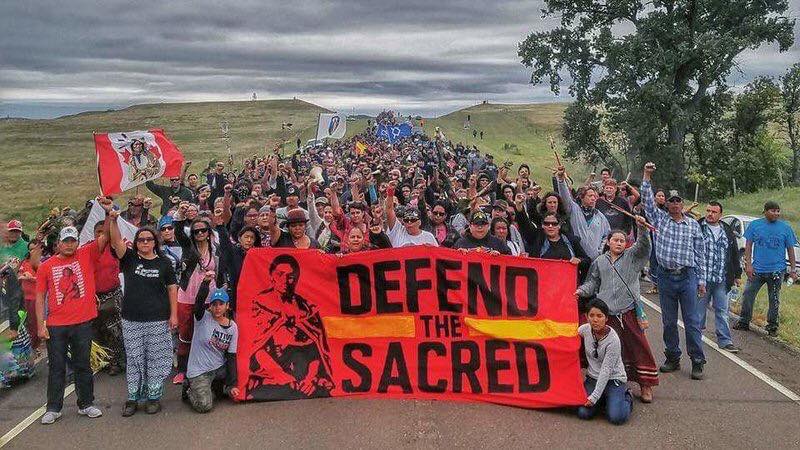 took place on Thursday, March 9, 2017, at 12 p.m. EST.
took place on Thursday, March 9, 2017, at 12 p.m. EST.
Watch the webinar below:
Webinar content:
- Introduction of the Speakers: 00:00-03:25
- Presentation: 03:25-47:57
- Question and Answers: 47:57-1:17:52
Webinar Summary:
Native Americans and First Nations peoples have distinct cultural methods of conflict management that vary from nation to nation, with specifically unique nonviolent strands apparent historically and presently. In our modern era, several Native Americans’ struggles have featured methods of nonviolent strategy to fight for rights oftentimes with surprising outcomes. They used nonviolent civil resistance to change dominant culture, laws and policies. While the struggle by the Standing Rock Sioux has elevated Native struggles in the public eye, much more has occurred during the long history of Native Americans’ mobilization for rights and justice.
In this webinar talk we aim to highlight this often unacknowledged history of nonviolent resistance, and show how the study of innovations and traditional methods of nonviolent conflict management, as well as direct nonviolent actions practiced by many of the tribes of the Native American Nations and First Nations, can benefit scholarship and practice of civil resistance.
CHECK OTHER UPCOMING WEBINARS
Presenters’ responses to questions not answered during the scheduled webinar time:
1. Would you please recommend some further resources — books, websites, authors, workshops et cetera — to explore the history, practice and philosophies of indigenous practices of nonviolent struggle?
- https://www.nonviolent-conflict.org
- http://www.aeinstein.org
- http://www.ienearth.org
- http://www.honorearth.org
- http://nvdatabase.swarthmore.edu
2. How do you collaborate with others involved who are coming from a nonviolent view but not solely a Native American struggle?
Tom: My own experience is that at times I drop almost everything else and jump in as a white ally. Then, when I come back to talk about coalition or mutual support, I am granted more of an audience. It isn’t a quid pro quo, just an authentic way to approach organizing.
3. I wonder if adopting the ‘Resistance’ motif is really that helpful when it comes to nonviolent action. After all, resistance seems to allow for the other to set the agenda and then blocks it, whereas the real power of nonviolent action is a positive way of life (seen to some extent in your list of cultural values) that pursues goals of the good, rather than driven by resistance to the bad. I think some of the ideas on Moving Forward tend in the positive direction but I wonder what you think about downplaying resistance since it seems to lock us into certain stances that may be too short-sighted.
Tom: I regard it as historically proven that it’s seamless, e.g., Gandhi’s transitions from obstructive to constructive actions. Updating that, I’d suggest that every solar panel reduces the need for oil pipelines. However, as Winona LaDuke suggests, there are times when, sigh, we just have to resist.
4. I am a non-Indigenous American citizen, living in Switzerland and consider myself an ally to indigenous rights. On a very practical level – what is the best way to show solidarity from overseas? I have felt frustrated in not being able to make my body available for the actions in Standing rock. Similarly, I have no money invested in financial institutions that fund dirty energy and trample on indigenous rights. How can one amplify the nonviolent activism from abroad?
Some possibilities:
- Write op-eds on the topic and send to American papers.
- Donate to indigenous groups–and promote the crowdsourced donating you believe to be most authentic.
- Organize local demonstrations and post the photos. My favorite is one that shows NoDAPL with the Eiffel Tower in the background.
- Use social media to promote the support of the tribes.
5. How important is it to have a 100% non-violent movement? Can you have people in your movement that believe that the destruction of property for instance is acceptable?
Tom: It is vital to frame everything as nonviolent, repeatedly, with logic. Rule 1: All violence backfires, whether committed by the armed forces of the state or by a movement. Having said that, with enough work, enough messaging, and repeated explanation, some property under some circumstances can be dismantled, interfered with, or repurposed so that it’s understood as nonviolent. It must be done transparently by people who claim credit and accept consequences for it. For example, I am an expert witness in an upcoming second trial in a series of them of defendants who transparently shut off oil pipelines. My deposition explains the role of nonviolent civil disobedience in successfully stopping violence, violations of human rights, etc. And I am personally a veteran of two Plowshares actions, both of which involved dismantling thousands of dollars of components of a thermonuclear command center. That was framed as nonviolent and accepted as such. Indeed, the closure of that command facility was due in large part to the growth of the coalition of peoples and organizations opposing it, including the Great Lakes Indian Fish and Wildlife Commission and their highly effective lawyers.
6. What the presenters have given us are just ad hoc ideas about what we can do with our elected officials, consumer choices, etc. That is too diffuse and weak. No, we need to pick a specific pillar and begin to chip away at that target with all our collective power. What is the weakest brick in the wall of the extractive industries raping indigenous lands?
Tom: I’m not the authority on what we must do right now, but I agree that a coalition of indigenous leadership should prioritize, if possible, and communicate that to one and all.
7. I believe that it is important to clearly define the enemy, so that the war can be won. The battles are many: pipelines, the fossil fuel industry when it is not working towards CO2 reduction, but actually seeking to export pollution, wage inequity, workplace inequity, nuclear power, waste and weapons, human rights violations and on and on the list could go. What do you think?
Sherri: I don’t believe in the idea of enemies. I see the actions of those harming the Earth as a spiritual and mental illness. War is what has brought us to this point. And, as Einstein said: You can’t solve a problem with the same mindset that created it. We need to hold back the tide of harm in ways that don’t harm the other. We need to see them as our brothers and sisters and make space for them to shift their mindset. We’ll never change the current paradigm or reach critical mass if we continue to draw lines of division and create enemy scenarios that result in us engaging in more acts of warfare. If we want a different world we have to invest in its creation. It’s a three part process, holding back the current harm, working to change hearts and minds, and creating new systems to replace the old. We divest all of our energy from the harmful systems, divest our money from their structures, and divest our minds from the patriarchal narrative.
8. In the interest of “telling truth”, would in not be more appropriate to refer to the people from Christopher Columbus and following to be referred to as “invaders” rather than “settlers”.
Sherri: Yes, invaders is appropriate for some, especially Columbus. However, there are also many that came here humbly seeking a better life, many of those individuals had good relationships with the Native peoples. When we are unable to see the distinction in the actions of individuals we run the risk of demonizing entire populations of people. History has shown us where that path leads. We must also separate the actions of the limited few in power from the rest of the population. Would you want to be judged by the actions of Donald Trump or Stephen Harper? I wouldn’t. There is no question that Native people were intelligent, with sophisticated democratic governance structures, successful trade routes, and ways of life that were in harmony with the rest of the world. There is a great deal that Indigenous people can teach the rest of the world. Those stories can be elevated, patriarchy can be called out and diminished, without demonizing the entire population. Within our population there are the descendants of slaves, asylum seekers, refugees, and countless others who were either brought here or came here for reasons that were wrought with peril. It’s far more complex and deserves to be treated with a bit more complexity than applying blanket statements to an entire population of people. My hope is that we can engage that complexity with more humanity and find a more unified path forward.
9. Curious to hear about other specific ways for non-native people to ally or be accomplices in the nonviolent struggle of the native population
Sherri: There are countless ways. One of the best ways to determine how to be the best an ally or accomplice is to go to the Native people in your area and ask them what they need. Don’t ever assume that it’s appropriate for you to speak for them. There is a distinct difference between speaking for someone and speaking in support of them, learn that distinction. Find ways to create a platform for their voices, support them in their efforts to protect their lands, waters, and way of life. Oppose any attempts to further diminish their rights. The best thing that you can do is to befriend Native people, have conversations with them, let go of any romantic or biased notions that you have about who they are and what they need. Let them lead you in your efforts to be helpful. Otherwise, you run the risk of being paternalistic. We are all still figuring out how to address the intersectionality within our movements, how to support the rights of all people, and how to heal the wound of our shared history of violence – we need to allow for a lot of patience and learning in this work. My suggestion is that you approach the work with willingness to learn and to be guided. Approach those who are leading the movements that you wish to support and ask them how you can best do that. They will be best suited to tell you the specific actions needed to address the particular issues that they are working on. In the meantime, form coalition within your area and let your political and industrial leaders know that you will not support their continued efforts to take from Native peoples or to diminish their rights. Then, be willing to back that that up with divestiture, campaigning against candidates that engage in those actions, and making it impossible for them to continue behaving in such disgraceful ways.
Presenters:
 Sherri Mitchell was born and raised on the Penobscot Indian Nation. She is an Indigenous Rights Attorney, and a global advocate for human rights and Earth rights. She received her JD and a certificate in Indigenous People’s Law and Policy from the University of Arizona’s James E. Rogers College of Law. Sherri is also an alumnus of both the Udall Native American Congressional Internship program and the American Indian Ambassador Program.
Sherri Mitchell was born and raised on the Penobscot Indian Nation. She is an Indigenous Rights Attorney, and a global advocate for human rights and Earth rights. She received her JD and a certificate in Indigenous People’s Law and Policy from the University of Arizona’s James E. Rogers College of Law. Sherri is also an alumnus of both the Udall Native American Congressional Internship program and the American Indian Ambassador Program.
Sherri has worked as an advocate for Indigenous rights for the past 20 years. She has served as a program coordinator and advisor to the American Indian Institute’s ‘Healing the Future Program, and Traditional Circle of Indian Elders and Youth. And, she is currently an advisor to the Indigenous Elders and Medicine People’s Council of North and South America.
She worked as a law clerk for the Solicitor of the United States Department of Interior, as an associate with Fredericks, Peebles and Morgan, and as an educator for the Civil Rights Division of the Maine Attorney General’s Office. In 2010, Sherri received the Mahoney Dunn International Human Rights and Humanitarian Award for her research into human rights violations against Indigenous peoples.
She is an accomplished writer and speaker, having been featured in numerous journals, anthologies and publications. She is a published poet and a contributor to both Indian Country Today, and Native News Network. She is currently completing her first book, Sacred Instructions, which is expected to be released in September 2017. She has worked with countless individuals and groups helping them to devise legal strategies for rights-based action, while also teaching in depth workshops that focus on the details of building strong, effective nonviolent rights-based movements.
Sherri is the founder and Director of the Land Peace Foundation. An organization dedicated to the protection of Indigenous rights, and the preservation of the Indigenous way of life. She also is co-host of the program Love (and revolution) Radio, a program that focuses on heart-based movements around the world.
 Tom H. Hastings, with his undergraduate degree in Peace and Conflict Studies, his Masters in Journalism, and his doctorate in Education, is Coordinator of the undergraduate degree programs in Conflict Resolution at Portland State University. He is a former member of the Governing Council of the International Peace Research Association (IPRA), former co-chair of the Peace and Justice Studies Association, and is on the boards of both the IPRA Foundation and the Oregon Peace Institute, as well as the Academic Advisory Council of the International Center on Nonviolent Conflict. He is Founding Director of PeaceVoice, a program of OPI, and has written several books and many articles about nonviolence and other peace and conflict topics. He is a former Plowshares resister, a nonviolence trainer, a founding member of two Catholic Worker communities, and currently lives in Whitefeather Peace House. His sons are African American, which literally colored his perspective on the world since the 1960s.
Tom H. Hastings, with his undergraduate degree in Peace and Conflict Studies, his Masters in Journalism, and his doctorate in Education, is Coordinator of the undergraduate degree programs in Conflict Resolution at Portland State University. He is a former member of the Governing Council of the International Peace Research Association (IPRA), former co-chair of the Peace and Justice Studies Association, and is on the boards of both the IPRA Foundation and the Oregon Peace Institute, as well as the Academic Advisory Council of the International Center on Nonviolent Conflict. He is Founding Director of PeaceVoice, a program of OPI, and has written several books and many articles about nonviolence and other peace and conflict topics. He is a former Plowshares resister, a nonviolence trainer, a founding member of two Catholic Worker communities, and currently lives in Whitefeather Peace House. His sons are African American, which literally colored his perspective on the world since the 1960s.
Relevant Readings:
Cloud Morgan, Larry (1985). Prison meditations. Minneapolis, MN: St. Joseph’s.
Whaley, Rick, & Bresette, Walter (1994). Walleye warriors: An effective alliance against racism and for the earth. Philadelphia, PA: New Society Publishers.
ICNC Special Course: Civil Resistance Unpacked: Strategic Practice and Analysis
In response to increased demand for knowledge about civil resistance, ICNC hosted in 2016 an additional online seminar beyond its annual ICNC/Rutgers online course. This second course offered was entitled “Civil Resistance Unpacked: Strategic Practice and Analysis” and took place from December 6, 2016 to January 25, 2017.
Learn more by clicking on the following links:
- Why did ICNC offer this course?
- Applications, admission and course participants
- Course description
- Course goals
- What is meant by “participant-driven” course?
- Participating in an online learning community
- Self-learning community code of conduct
- Participant time and activity commitment
- Course content
- Learning gains survey results
- Final course evaluation results
- Selected testimonials
Why did ICNC offer this course?
In the past several years, ICNC has received rapidly increasing demand for knowledge and greater understanding of the dynamics and power of civil resistance. Individuals, groups, and organizations in the United States and around the world are reaching out to us in record numbers to inquire about civil resistance learning opportunities. We view online courses as a way to better keep up with this increasing demand, achieve greater scale, and reach more people in our educational efforts.
Based on the online seminar ICNC offers each year in partnership with Rutgers University, the special online course “Civil Resistance Unpacked: Strategic Practice and Analysis” offered modules on civil resistance with a variety of readings and videos that guided participants in their learning, online discussions, and interactions. Participants included activists, organizers, scholars, students, members of the policy community and NGOs, journalists, and others with extremely diverse experience with civil resistance and knowledge on this field of study and practice.
Applications, admission and course participants
Within only 13 days of advertising the course, ICNC received 97 applications from around the world. Of the 97 applicants, 51 participants were accepted. A poll conducted during the orientation webinar indicated that the majority of the participants:
- identified themselves as practitioners;
- were predominantly interested in mobilizing for social and environmental justice; and
- wanted to seek advice from and exchange ideas with other participants.
In addition, the participants specified their learning interests and goals; their recent experience related to civil resistance; how they planned to enrich a self-learning community that this special course was based on; and where they would apply the knowledge gained from the course.
Civil resistance is a social and political phenomenon that defies a long-held belief in the power of arms to challenge a brutal, violent adversary. Contrary to the violence-centered narrative that dominates mass media, nonviolent resistance campaigns against repressive states have been on the rise in the last few decades, surpassing violent insurgencies by almost 5 to 1 in the last 15 years.
For the past several years, ICNC has supported work to develop unique datasets of nonviolent campaigns (NAVCO). In 2011, this work led to a ground-breaking quantitative study that showed that civil resistance movements often emerge and succeed in challenging environments. It also established that civil resistance struggles are more than twice as effective against violent states as armed resistance groups.
Informed by these important developments in research and the practice of civil resistance, this free, online course provided an interactive, in-depth, and multidisciplinary perspective on civilian-based movements and campaigns that defend and obtain fundamental rights and justice around the world. The course aimed to explain the nature of civil resistance and its force, underlying dynamics, and effectiveness.
During the course participants reflected on the skills and agency of ordinary people, their strategies and tactics, how movements can confront repression, the backfire effect, and how movements have caused defections among their adversaries’ supporters. We looked at how entrenched political and social structures and practices shifted under the pressure of organized nonviolent movements, and the long-term impacts on societies, nations, and institutions. We also studied the role of gender and women in civil resistance.
Finally, the course also examined a variety of case studies of civil resistance struggles, including movements for democracy and human rights, as well as movements challenging corruption, corporations, and abusive and violent non-state actors.
The online course involved a number of activities, including forum posts and online discussions, readings, and viewing videos.
The main goals of this online course were to:
- learn about main concepts and ideas of civil resistance
- become familiar with various cases of nonviolent campaigns and movements
- reflect on the effectiveness of civil resistance and its power to overcome adversarial conditions
- share experience and knowledge with other participants and moderators
- help participants become more informed observers of nonviolent conflicts, and effective conveyors of civil resistance knowledge
What is meant by “participant-driven” course?
The main difference between this course and previous online seminars was in the way that online interactions were envisaged to take place. “Civil Resistance Unpacked” was an entirely participant-driven course whereby, after reviewing relevant modules, participants interacted with one another on various forums without additional ICNC moderation or substantive input. In that sense, participants were part of a learning community that was built around participants’ motivation, open attitude to learning, desire to share and interact with others, and relevant knowledge and experience.
Participating in an online learning community
Participants formed a learning community whose intellectual strength and vibrancy depended solely upon its members and their active and insightful written contributions in various forums. No outside moderators joined this class. A specific set of questions set up in advance by course administrators in the discussion forums guided participants’ exchanges. In these forums, participants were expected to monitor and read other learners’ posts, share innovative ideas and thoughts within the learning community, ask follow-up questions to other participants, suggest answers and plausible solutions as well as, in rare cases, flag any inappropriate behavior on the forums.
Self-learning community code of conduct
Because no outside moderation of online discussions was envisaged for this course, a specific code of conduct was developed to ensure that participant interactions and knowledge sharing were as meaningful, substantive, and respectful as possible.
Participants committed themselves to following and enforcing the follow code of conduct.
1. What participants are expected to do in their online interactions
- Respect each others’ points of view
- Share comments that relate to forum questions and the subject at hand
- Review assigned material (readings/videos) included in the course chapters, before responding to questions raised in the forums.
- Keep an open mind and a desire to learn from others. People in the community may have strong perspectives, but do not dismiss others simply because they have a different perspective.
- Focus on the phenomenon of civil resistance. If you find your conversations going onto other topics that are not directly related to the course, then you should feel free to take those conversations outside of the course (i.e. over email, Facebook, phone, etc.).
- Focus on debating ideas, and separate people from ideas. If you disagree with an idea, don’t attack the person who posted the idea, or make assumptions about their motives.
- Back up your ideas, criticism and arguments with references to authoritative and verified sources or personal experience.
- In addition to the readings, refer to other source materials to support your statements or as background information to the point you are making.
- Read carefully and in entirety posts made by other people before replying to them. If something is not clear in someone’s else comment, do not hesitate to ask for clarifications and further explanations while you offer your own points of view on the discussed matter.
- Present various possible arguments that might be made around the discussed issue.
- Write concisely more than expansively.
- Post regularly to the required forums and catch up as soon as possible if you fall behind.
- Formulate your thoughts and ideas in clear language. Other participants may have limited knowledge about the case that you are elaborating on.
- Other learners are people too, although you will not necessarily see them. Do not use ideological or divisive language and instead apply objective reasoning that is backed up by evidence and arguments from authoritative sources.
- Share first-hand accounts and stories from your personal and professional work, study, or activity that pertain to the discussed subject matter.
- Humor, encouragement, praise, constructive criticism, and putting yourself in someone else’s shoes are the most effective ways to engage with others and facilitate informed discussions that do not exclude anyone.
- No profanity or personal insults.
- Do not hesitate to report any inappropriate, offensive or vulgar posts to the course administrators.
2. Additional commitments of members of the learning community
- The learning experience is optimized when all participants remain active all the way through the end of the course. Do not abandon your fellow participants in the course (unless there is a family or personal emergency); they are counting on your active contributions, just as you are theirs.
- Do not be tardy with posting during the week as this negatively affects your and other participants’ learning progress.
- Do not copy and paste from outside sources when you write in forums. Use your own wording and vocabulary, though feel free to cite (and use quotation marks when you do) authoritative and verifiable sources.
Even though we have never had any problems of the following kind during our previous online courses, we want to make sure that participants:
- Do not use ad-hominem attacks or any race, gender, religion, national origin, age, disability, sexual orientation based attacks.
- Do not use threats or incite any kind of violence.
Participant time and activity commitment
Participants were expected to spend between 7 and 10 hours per week in the online classroom, or a minimum of 1 hour per day for the full duration of the course on reviewing materials, posting comments about the readings and assigned videos, and interacting with/responding to other participants’ posts.
Module 1: Foundations of Civil Resistance
What Is Civil Resistance?
People and Power
Effectiveness of Civil Resistance
Additional Resources
Module 2: Emergence of Civil Resistance Movements; Conditions and Skills
Emergence of Civil Resistance Movements
Conditions and their Impact
Skills Drive Civil Resistance
Additional Resources
Module 3: Strategy and Tactics of Nonviolent Struggle
Nashville Lunch Counter Campaign (U.S. Civil Rights Movement)
Strategic Planning and Tactical Choices
Cultural Resistance Tactics
Tactical Innovation
Conflict Analysis Tools
Additional Resources
Module 4: Backfire, Defections and Violent Flanks
Repression and Backfire
Defections
Violent Flanks
Additional Resources
Module 5: New Frontiers in Civil Resistance Studies
People Power versus Corruption and Impunity
Civil Resistance in War-Torn Environments
Women and Nonviolent Resistance
Democratization and Civil Resistance
Civil Resistance and Corporate Governance
Additional Resources
Module 6: Final Course Evaluation & Learning Gains Survey
Post Course Learning Gains Survey
Final Course Evaluation
ICNC distributed pre-seminar and post-seminar surveys to measure gains in learning progress among course participants. Included below are the graphed responses to the questions included in the surveys. In general, participants’ responses illustrate a positive trend in learning gains in civil resistance knowledge.
1. On the scale below, select the number that best represents your current knowledge of civil resistance or nonviolent movements. (1: None; 10: A lot)
2. On the scale below, identify your comfort level in speaking to others about civil resistance or nonviolent movements. (1: Not at all ; 10: Very comfortable)
3. On the scale below, select the number that best represents your view that revolutions against brutal regimes can succeed ONLY if revolutionaries retain the option to use violent means. (1: Strongly agree ; 10: Strongly disagree)
4. On the scale below, select the number that best represents your view that protests, marches, and demonstrations are the ONLY civil resistance methods. (1: Strongly agree ; 10: Strongly disagree)
5. On the scale below, select the number that best represents your view on how successful you think civil resistance campaigns against repressive states have been in the past. (1: Not successful; 10: More successful than not)
6. On the scale below, select the number that best represents your view that movements that face repression must fail. (1: Strongly agree ; 10: Strongly disagree)
7. On the scale below, select the number that best represents your view that in order to be successful nonviolent movements must receive support from external actors. (1: Strongly agree ; 10: Strongly disagree)
8. Which of the factors, in your view, is/are essential for a nonviolent movement to be successful. You can select more than one. (Participation; Opponent that is willing to negotiate; Strategic planning; Charismatic leader; Nonviolent discipline; Material resources; Absence of repression)
9. On the scale below, select the number that best represents your view about how important you think nonviolent discipline is in a successful civil resistance movement. (1: Not at all; 10: Extremely important)
10. Do you think that nonviolent civil resistance is more effective than violent resistance against repressive regimes?
Final course evaluation results
Included below are graphed responses to selected questions from the final course evaluation. (1: Strongly disagree; 5: Strongly agree)
1. Course content was organized and planned:
2. The goals of the course and its modules were clear:
3. Course modules and content were timed and sequenced well:
4. Course content was comprehensive and balanced, and topics were well selected:
5. Taking this online course was a positive experience:
6. I now have more knowledge about civil resistance and its various topics than I had before taking the course:
7. I learned a considerable amount of new information about civil resistance:
8. I learned about civil resistance from other course participants:
9. Course content matched my interests and professional needs:
10. The knowledge I gained from the course will be relevant in my current and future study/work/activities:
11. The course met or exceeded my expectations:
12. I would recommend this course to other people:
13. How would you assess your own engagement with the course material, including participation in the course forums? (1: Did not engage with the course material much and did not post regularly or at all to forum discussions; 5: Engaged with the course material as per the original commitment of at least 1 hour per day; 7 hours per week minimum and posting regularly to forum discussions)
14. How effective was the self-learning community that this course relied on for your learning, interactions and networking? (1: Not effective; 5: Very effective)
“If you want to know how to build successful campaigns and movements, this course can help you do it. You wanna win, right? If so, this is the course for you!”
-Stuart Basden, ICNC Special Course Participant
“The ICNC online course provided a tremendous opportunity to learn about civil resistance and People Power. It energized me and renewed my faith that together, united and organized, we can make a positive difference in the world.”
-Maureen Daly, ICNC Special Course Participant
“Taking this course expanded my knowledge and awareness of all aspects of civil disobedience from misperceptions, its effectiveness, history, tactics and challenges. Collectively participants shared a wealth of experience. This course is highly recommended whether one is new or a veteran to nonviolent action.”
-ICNC Special Course Participant
“This course provided me with easy access to crucial materials that I immediately incorporated into my teaching. The resources are abundant and well organized. Since we will continue to have access to the “optional” materials, I will go back again and again to increase my knowledge of civil resistance.”
-ICNC Special Course Participant
“This is a wonderful course for learning the rudiments of non-violent civil resistance. It is stocked with many sources and resources to teach participants a strong historical and contemporary understanding of civil resistance. It is also great to connect with many people who share interests in the topic and provides opportunities to learn from them.”
-Austin Silvan, ICNC Special Course Participant
“As an activist and a teacher, I find the online courses offered by the ICNC a great way to find new resources I can use in workshops and classes I teach. These courses are the place I turn to in order to find new research findings in the ever-growing field of civil resistance studies that help with both my teaching and use of civil resistance in my organizing work.”
-ICNC Special Course Participant
“Taking the “Civil Resistance Unpacked: Strategic Practice and Analysis” course during the presidential transition was empowering and insightful. The course demystified the specifics of nonviolent civic engagement and educated on its many diverse forms that should be part of any true democracy. This reinvigorated my commitment to citizen action and the positive power of people acting in community towards common goals.”
– Jeanine M. Canty, ICNC Special Course Participant
“I found the course extremely helpful and I learned a lot. There is a great mix of video and reading content that’s been carefully selected to convey the most relevant and cutting edge research on civil resistance. The discussion forums really helped me to think through the materials and to apply them to my own context. Much of the material that I wrote in response to the questions posed in the forums will continue to be useful to me now after the course.”
-Doug Coltart, ICNC Special Course Participant
2013 ICNC Online Course: Civil Resistance and the Dynamics of Nonviolent Conflict
ICNC offered a moderated online course on civil resistance in partnership with Rutgers University Graduate School, which took place from February 18, 2013 to April 5, 2013.
Click the following links to navigate:
Applications, admission and course participants
ICNC received close to 100 applications and accepted 42 participants. Among these 42 participants, 35 countries were represented including Latvia, Kenya, Germany, Uganda, New Zealand, South Africa, Guatemala, Israel, Brazil, Nigeria, among others. The course participants were mostly mid-level professionals that included lawyers, journalists, NGOs executives, development managers and civil society experts, as well as doctoral students and academics.
The online course consisted of an introduction module and seven thematic modules. Each thematic module was released at the beginning of the week and the participants and moderators engaged in different forums of the module throughout the week. A detailed course outline is provided below.
Module 1. Welcome and Introductions
Meet Your Course Facilitators
ICNC and Rutgers
Course Schedule
Course Requirements
Video Presentations
Tips for Online Learning
Module 2: Theoretical Foundations of Civil Resistance
Civil Resistance in Context
Fundamental Ideas
Common Misconceptions
Module 3: Historical Development of Civil Resistance
Centuries of Nonviolent Conflict
Core Dynamics of Civil Resistance
Nonviolent Action in the Islamic World
Movements Learn from One Another
Module 4: Tools of Conflict Analysis + Strategies and Tactics
Pillars of Support and Mechanisms of Change
Spectrum of Allies
Strengths, Weaknesses, Opportunities, and Threats (SWOT)
A Force More Powerful: Nashville segment
Experience from the Thai/Burma Border
Strategic Planning and Tactical Choices
Principles of Strategic Nonviolent Conflict
Cultural and Creative Dynamics of Nonviolent Tactics
Experience from Palestine
Methods of Nonviolent Action
Module 5: Skills vs. Conditions and Tactical Innovation in Nonviolent Conflict
Conditions and Their Impact
Skills vs. Conditions
Tactical Innovation
People Power: The Game of Civil Resistance
Module 6: What about Violence?
Violent vs. Nonviolent Action
Radicalized, Extreme Violence
The Paradox of Repression and Backfire (Part 1)
The Paradox of Repression and Backfire (Part 2)
Radical Flank Effect
Module 7: The Role of Media in Civil Resistance
Civil Resistance and Conventional Media
Digital Tools and New Media
Citizen Journalism
Module 8: Final Evaluation
Final Quiz
Final Course Evaluation
“Everyone was engaged and made interesting contributions; there was real debate in the forums, with the facilitators adding new ideas and summaries.”
-ICNC Online Course Participant, 2013
“I really enjoyed the range of different materials used to support learning. I really appreciated the opportunity to understand our own struggles.”
-ICNC Online Course Participant, 2013
“This was such an interesting course, full of material I didn’t know about, and new ideas, and really accessible.”
-ICNC Online Course Participant, 2013
“[I liked] learning from other students, and making potentially long- term contact with some of them.”
-ICNC Online Course Participant, 2013
West Papua independence movement becomes more strategic
Ideas & Trends: Five countries in which civic space is rapidly closing
North Korea: Aggressive crackdowns on information and movement
U.S.: Four more journalists get felony charges after covering inauguration protests
Morocco: Year of reform and repression
2012 ICNC Online Course: Civil Resistance and the Dynamics of Nonviolent Conflict
An ICNC moderated online course on civil resistance offered in partnership with Rutgers University Graduate School took place from April 23, 2012 to June 5, 2012.
Learn more by clicking on the topic links:
- Applications, admission and course participants
- Course content
- Selected course evaluation results
- What participants liked best about the course
- Selected testimonials
Applications, admission and course participants
ICNC received 56 applications and accepted 31 participants. Among these 31 participants, 12 countries were represented including Cameroon, Spain, Thailand, United States, Canada, New Zealand, Germany, Georgia, among others. Selected participants included graduate students, educators, activists, and civil society professionals.
The online course consisted of an introduction module and seven thematic modules. Each thematic module was released at the beginning of the week and the participants and moderators engaged in different forums of the module throughout the week. A detailed course outline is provided below.
Module 1. Welcome and Introductions
ICNC and Rutgers
Course Schedule
Course Requirements
Meet Course Facilitators
Video Presentations
Tips for Online Learning
Module 2: Theoretical Foundations of Civil Resistance
Civil Resistance in Context
Fundamental Ideas
Common Misconceptions
Module 3: Historical Development of Civil Resistance
A Century of Nonviolent Conflict
Core Dynamics of Civil Resistance
Nonviolent Action in the Islamic World
Movements Learn from One Another
Module 4: Tools of Conflict Analysis + Strategies and Tactics
Pillars of Support
Spectrum of Allies
Experience from the Thai/Burma Border
A Force More Powerful
Strategic Planning and Tactical Choices
Principles of Strategic Nonviolent Conflict
Cultural and Creative Dynamics of Nonviolent Tactics
Experience from Palestine
Module 5: Skills vs. Conditions and Tactical Innovation in Nonviolent Conflict
Conditions and Their Impact
Skills vs. Conditions
Tactical Innovation
People Power: The Game of Civil Resistance
Module 6: What about Violence?
Violent vs. Nonviolent Action
Radicalized, Extreme Violence
The Paradox of Repression and Backfire (Part 1)
The Paradox of Repression and Backfire (Part 2)
Radical Flank Effect
Module 7: The Role of Media in Civil Resistance
Civil Resistance and Conventional Media
Digital Tools and New Media
Citizen Journalism
Module 8: Final Evaluation
Final Quiz
Final Course Evaluation
Selected course evaluation results
How would you rate your learning experience in this course?
How would you rate the course instructors and their facilitation of the course?
What participants liked best about the course:
- The contemporariness of the materials
- The organization and structure was easy to follow
- The varieties of learning techniques
- The live webinars were really valuable
- The video intro and recap of the past unit was really helpful
- The feedback was useful and relevant
- The times when we connected via webchat and video conference were most engaging
- The forum interactions
- Excellent course materials
- Access to a cornucopia of new resources
- The wealth of knowledge provided through readings, presentations, and forum discussions
- Helpful nature of tutors’ comments
- Logical structure and development of course
- Respectful and friendly way of orchestrating and interacting with participants
- Interactive sessions with course instructors and other experts
- Instructors were all highly qualified, informative and accessible
- I appreciated instructors’ weekly video updates. They made the course more personal
- The learning from other students, and making potentially long-term contact with some of them
“The ability to discuss things in the forum was very valuable….This was such an interesting course, full of material I didn’t know about, and new ideas, and really accessible. I loved having a variety of media…I could put the reading into ibooks and have the links to the videos on YouTube. I thought it was so clever when the tutors gave short video feedback after the first week – it was very motivating and engaging. I really enjoyed the links to other materials provided by other participants – really interesting things I would not know how to find out otherwise. Finally the daily digest from the Forums was great – even when I had days when I didn’t get a chance to contribute it reminded and encouraged me to contribute.”
-ICNC Online Course Participant, 2012
“I found the facilitators very active and appreciated how they offered weekly video updates. It made the course more personal. I also liked the simulation exercise and how most of the materials were downloadable, such as the slides from the YouTube presentations.”
-ICNC Online Course Participant, 2012
“The other participants! Everyone was engaged and made interesting contributions; there was real debate in the forums, with the facilitators adding new ideas and summaries.”
-ICNC Online Course Participant, 2012
“This course was excellently conducted. The interactive sessions with our course instructors and other experts were fantastic and a unique opportunity to interact with specialists we might never otherwise have the opportunity to meet in person. The variety of materials — from readings, to lectures to the online simulation — were incredibly well chosen, informative, interesting and appropriate. It was also great to see our instructors in the weekly videos and hear their feedback and thoughts about the prior week’s segment and learn more about other.”
-ICNC Online Course Participant, 2012
“The triangle of personal-scientific-and-technical expertise. Thanks for your respectful and friendly way of orchestrating and interacting with us during the last six weeks. This was just amazing. The range of educational resources was stunning. Thanks for this inspiring mix and hints to follow up. I also really liked how precise everything was set up. Everything just worked out smoothly.”
-ICNC Online Course Participant, 2012
“I really enjoyed the range of different materials used to support learning. I also really appreciated the opportunity to link that into direct examples and try to understand our own struggles though the context of the theory.”
-ICNC Online Course Participant, 2012







